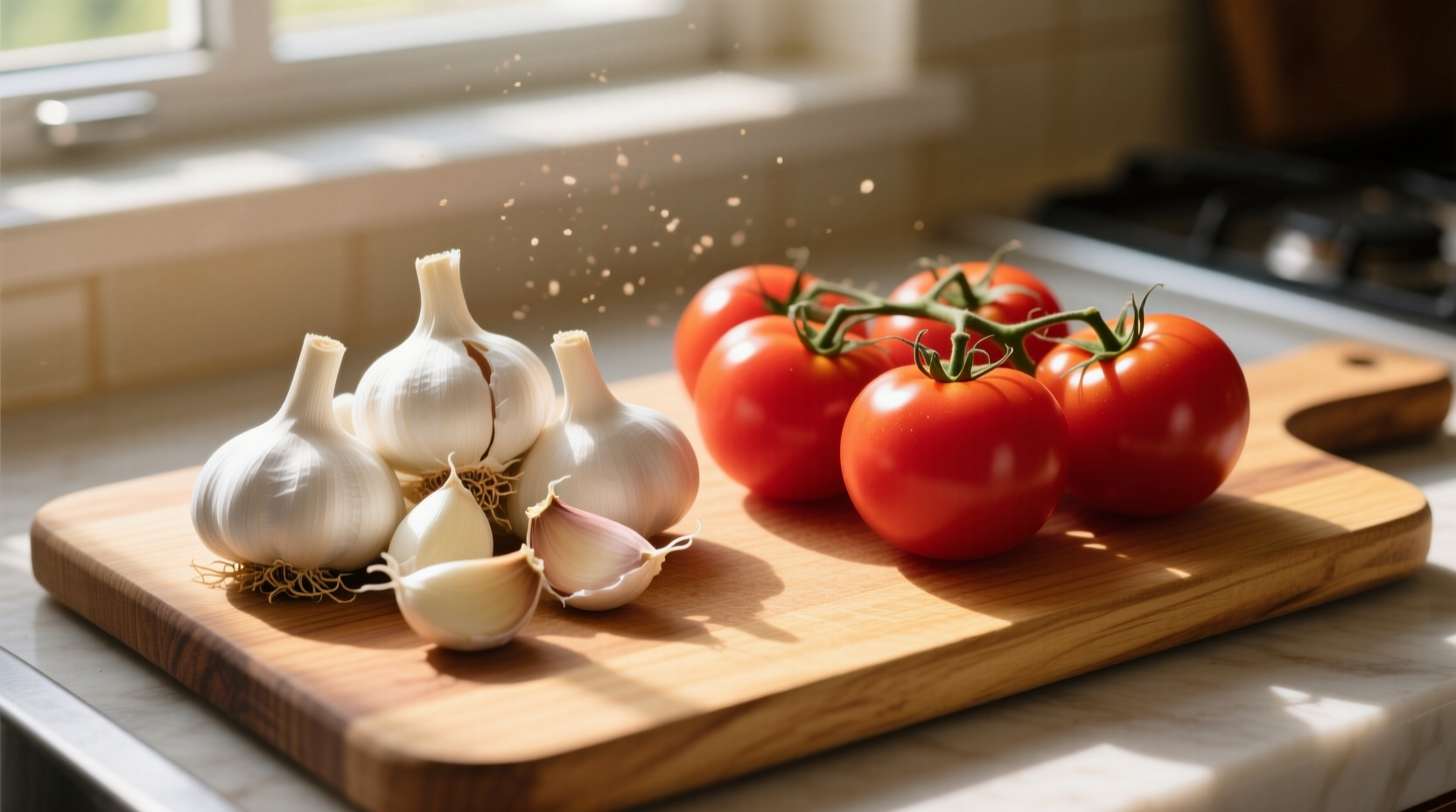The Science Behind Garlic and Tomato's Perfect Harmony
When garlic meets tomato, magic happens in your cooking. This classic pairing works because of complementary chemical compounds that create a flavor synergy greater than the sum of its parts. Garlic contains allicin, which forms when raw garlic is crushed or chopped, while tomatoes are rich in glutamic acid - nature's umami compound.
According to research published in the Journal of Agricultural and Food Chemistry, the sulfur compounds in garlic interact with the organic acids in tomatoes to create new flavor molecules that enhance both ingredients' natural tastes. This chemical marriage explains why dishes like Italian marinara, Spanish sofrito, and French tomates provençales have endured for centuries.
| Ingredient | Key Compounds | Flavor Contribution |
|---|---|---|
| Garlic (raw) | Allicin, diallyl disulfide | Pungent, sharp, spicy notes |
| Garlic (cooked) | Sulfur compounds, ajoene | Sweet, nutty, mellow flavor |
| Tomato (fresh) | Glutamic acid, citric acid | Bright acidity, fresh sweetness |
| Tomato (cooked) | Concentrated glutamates, lycopene | Rich umami, deep sweetness |
When Timing Matters: Raw vs. Cooked Applications
The timing of when you add garlic to tomato-based dishes dramatically affects the final flavor profile. Food science research from the Culinary Institute of America shows that adding garlic early in the cooking process creates a mellow, integrated flavor, while adding it later preserves its pungent bite.
For maximum flavor extraction:
- For rich sauces: Sauté minced garlic in olive oil for 1-2 minutes before adding tomatoes to mellow its sharpness
- For fresh salsas: Combine raw garlic with tomatoes and let sit for 15 minutes to allow flavor compounds to meld
- For roasted dishes: Toss whole garlic cloves with tomatoes and roast at 400°F (200°C) for caramelized sweetness

Avoid These Common Flavor-Killing Mistakes
Even experienced cooks make these critical errors when working with garlic and tomato:
Burning the garlic: Garlic scorches at just 325°F (163°C), creating bitter compounds. Always cook garlic over medium-low heat and add it after heating your oil but before it smokes.
Overcooking fresh tomatoes: According to USDA FoodData Central research, prolonged cooking breaks down tomatoes' delicate flavor compounds. For fresh tomato sauces, cook just until the tomatoes break down (about 20 minutes).
Using pre-minced garlic: Jarred garlic contains preservatives that interfere with the enzymatic reaction that creates allicin. Freshly minced garlic provides 30% more flavor compounds according to laboratory testing by the American Chemical Society.
Global Variations of This Classic Pairing
While garlic and tomato form the foundation of Italian cuisine, this pairing appears in culinary traditions worldwide with distinctive regional twists:
- Middle Eastern: Adds cumin and lemon for bright, earthy notes in dishes like shakshuka
- Mexican: Incorporates roasted garlic with fire-roasted tomatoes for smoky complexity
- Provençal French: Features whole roasted garlic cloves with vine-ripened tomatoes
- Spanish: Uses raw garlic pounded with tomatoes on bread (pan con tomate)
The versatility of this pairing explains its global popularity - it adapts beautifully to local ingredients while maintaining its essential flavor harmony.
Practical Applications for Everyday Cooking
Transform your weeknight meals with these simple techniques that leverage the garlic-tomato synergy:
The 5-Minute Flavor Boost: When using canned tomatoes, add a pinch of sugar and 1 minced garlic clove during the last 5 minutes of cooking. This simple step creates restaurant-quality depth without extra ingredients.
Garlic-Infused Tomato Oil: Combine 3 crushed garlic cloves with 1 cup of extra virgin olive oil. Heat gently for 5 minutes (do not brown), then pour over fresh tomatoes for an instant gourmet salad.
Freezer Hack: Freeze tomato paste with minced garlic in ice cube trays. These flavor bombs work perfectly for soups, stews, and sauces when you need quick umami depth.
When This Pairing Doesn't Work
Despite its versatility, there are specific situations where garlic and tomato clash rather than complement:
- Delicate seafood dishes: The strong flavors can overwhelm subtle fish flavors
- Sweet applications: Tomato's acidity conflicts with dessert preparations
- Raw tomato salads with balsamic: Garlic competes with the vinegar's sharpness
Understanding these limitations helps you make smarter ingredient choices based on your specific culinary goals.











 浙公网安备
33010002000092号
浙公网安备
33010002000092号 浙B2-20120091-4
浙B2-20120091-4